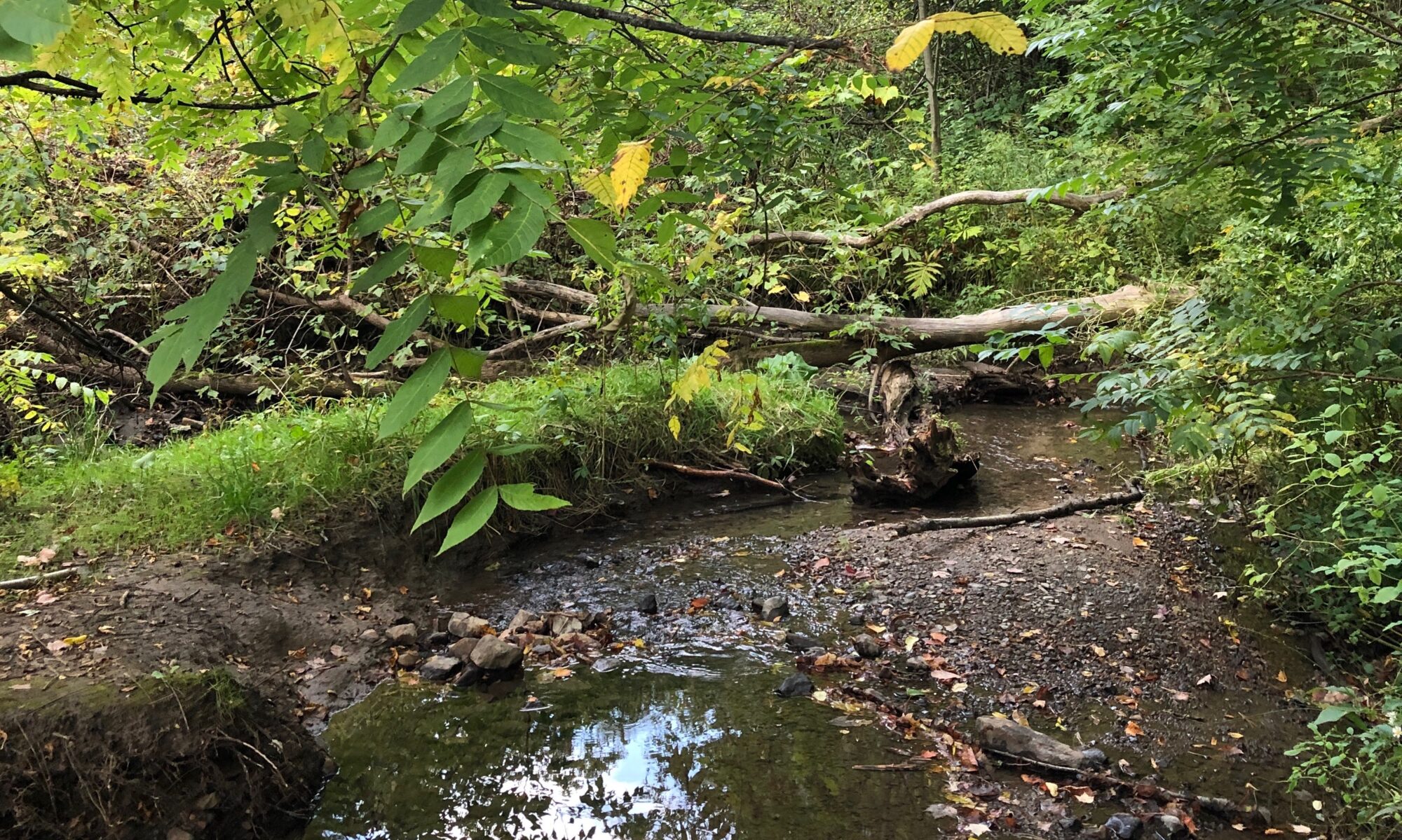Today is February 23 and typically there is a lot of snow and it is really, really cold. Although the snow part is true, today was the perfect temperature: 40 and sunny. This made the trip to my spot in Centennial a lot easier. Because it was warmer, the snow had started to melt but because there was a huge snowstorm about 2 weeks ago, it didn’t really make a difference. However, compared to January, the larger amounts of snow did make a bigger difference. All the plants and leaves were still dead except the occasional moss on trees. Some changes were made in the brook because the high levels of snow, the brook had become slightly smaller. Some parts of the stream had thick layers of ice on top while others did not. The stream was still moving at a decent pace under the ice.
Other than a lot of human tracks, not many wildlife tracks were seen except the occasional dog track. Birds were chirping in the distance but none were seen. As we were almost out of Centennial, my friend and I noticed a track that looked just like a deer track deep in the snow. We followed the tracks off the trail for about 20 or so yards where we finally found a large flat space. In this space, there was on large spot where there was no snow and lots of scat in a few different spots in the area. After doing some research, we were positive that the tracks and the scat were from deer.
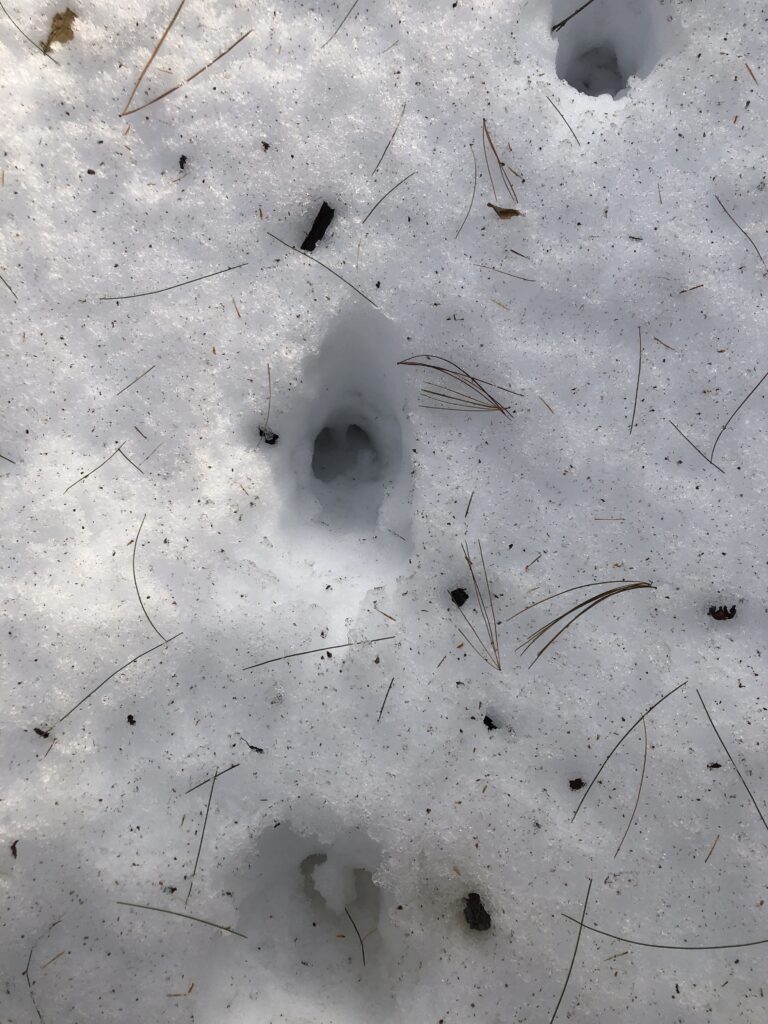
Deer Track 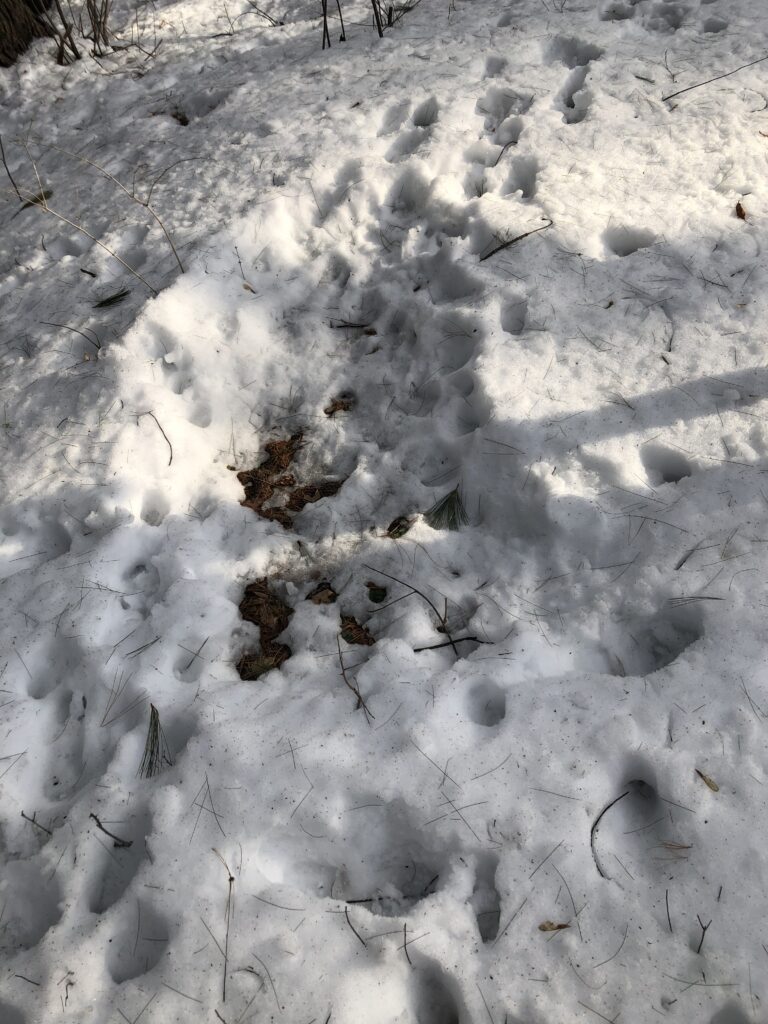
Area where deer may have laid down 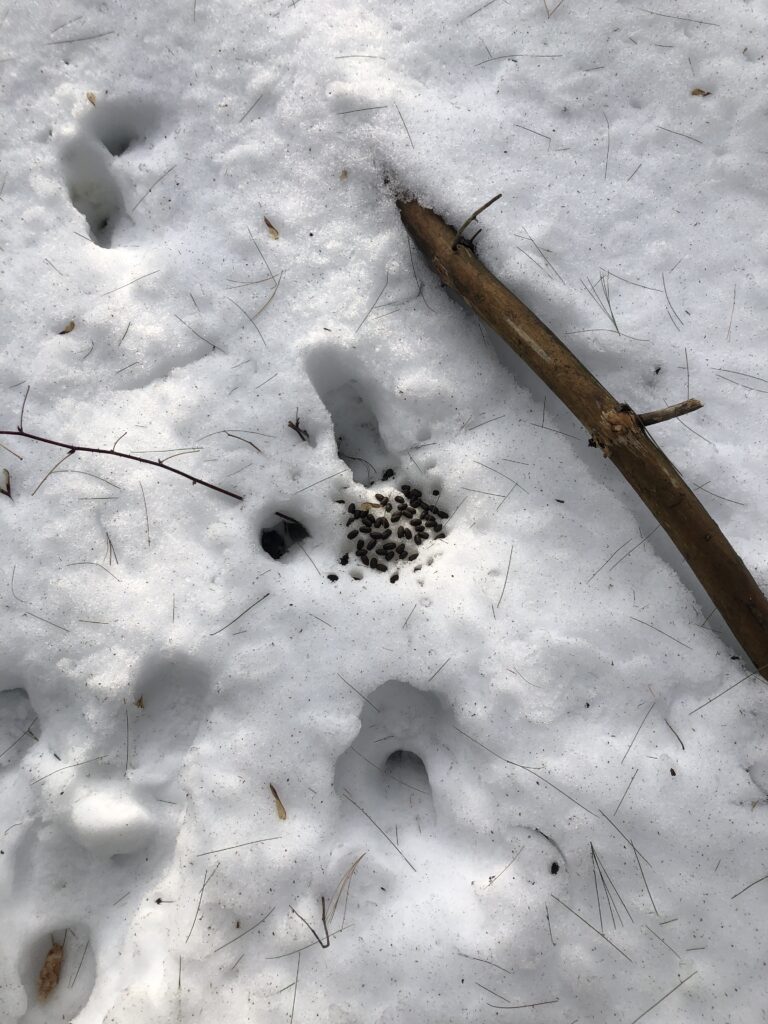
Deer Scat and Track 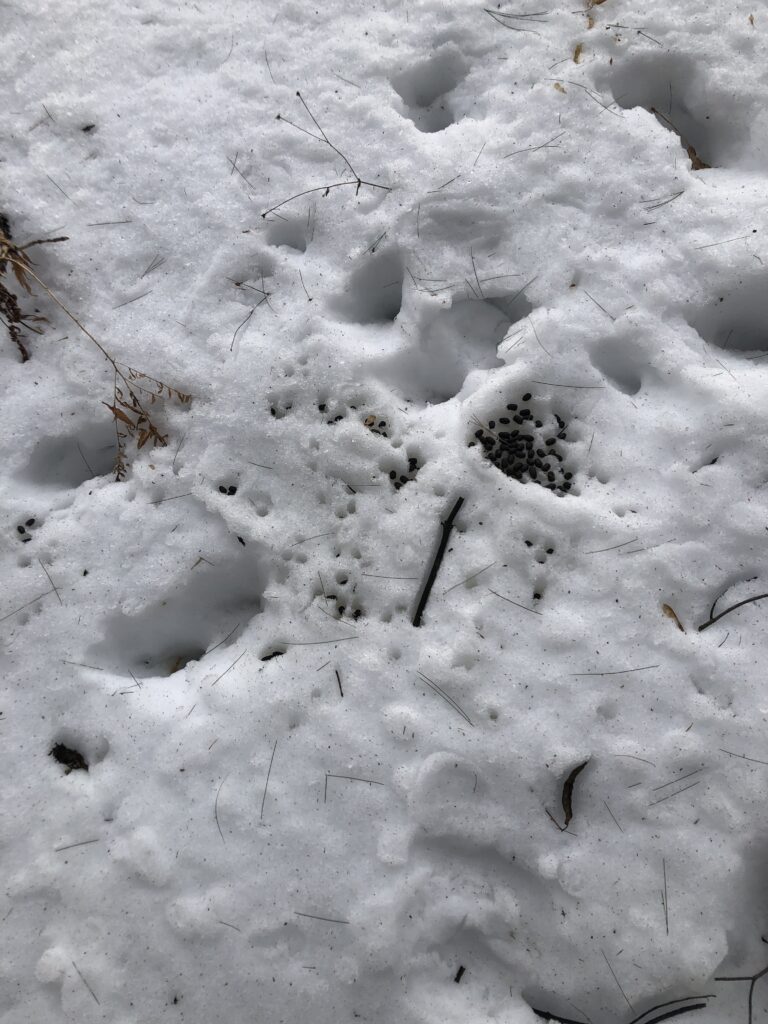
More Scat
These tracks and scat were most likely made by a white-tailed deer which are very common here in Vermont. White-tailed deer are very adaptable and can live in many different habitat types however, they prefer to live/stay near the forest edge. This makes sense as to why it was so close to the entrance of Centennial. It makes sense as to why the deer would be in Centennial in the winter because it gives them more coverage from the snow and people. During the day deer often are hiding or sleeping or looking for food/moving while at night they do very similar things except at night white-tailed deer are trying to avoid predators (“White Tailed Deer”).
White-tailed deer eat a variety of leaves, twigs, and nuts from various tree species. They also eat small plants, grasses and some types of fruit. In Vermont during hunting season, humans are probably considered one of the top predators for deer. Other predators include, wolves, mountain lions, bears etc. These predators are highly unlikely to be found in Centennial so the tracks are most likely not running away from one of them (“White Tailed Deer”). The path to where the tracks ended had many low branches that the deer could have eaten. Based off of the scat and the large indent in the snow, I imagine that the deer came to this area to take a bathroom break and to lay down because it was wide open with not many trees or plants on the ground.
This was such a cool thing to find that I never thought I would see especially in Centennial so I think today I went on the perfect day. This definitely helped me connect more to my place.
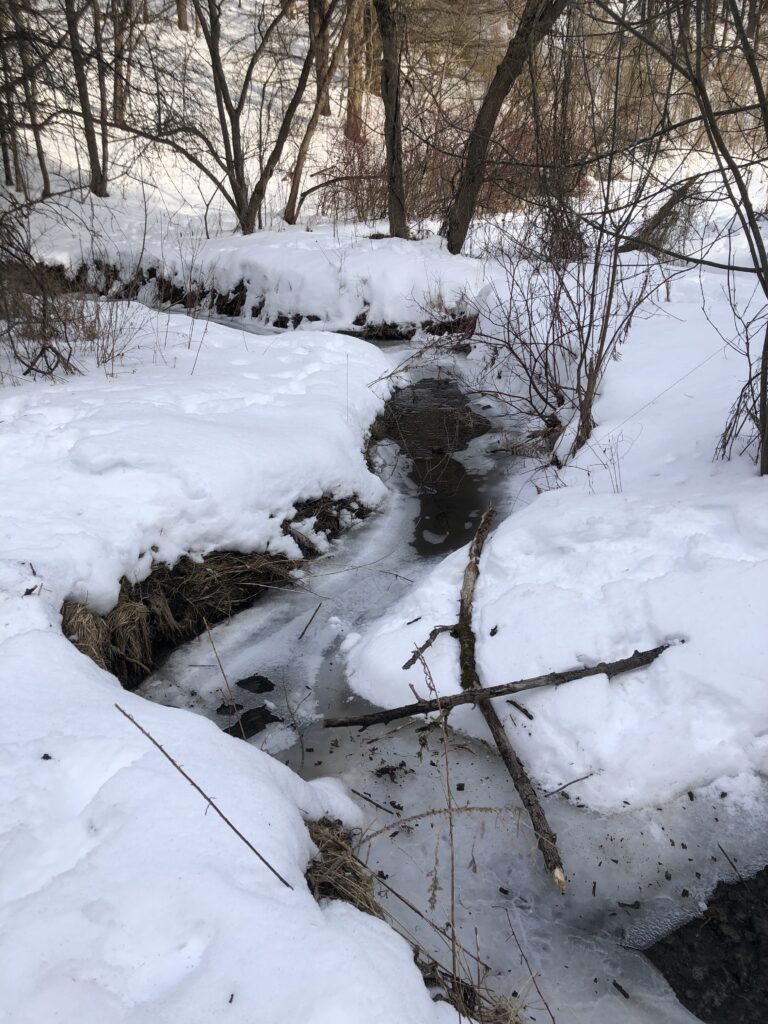
Brook 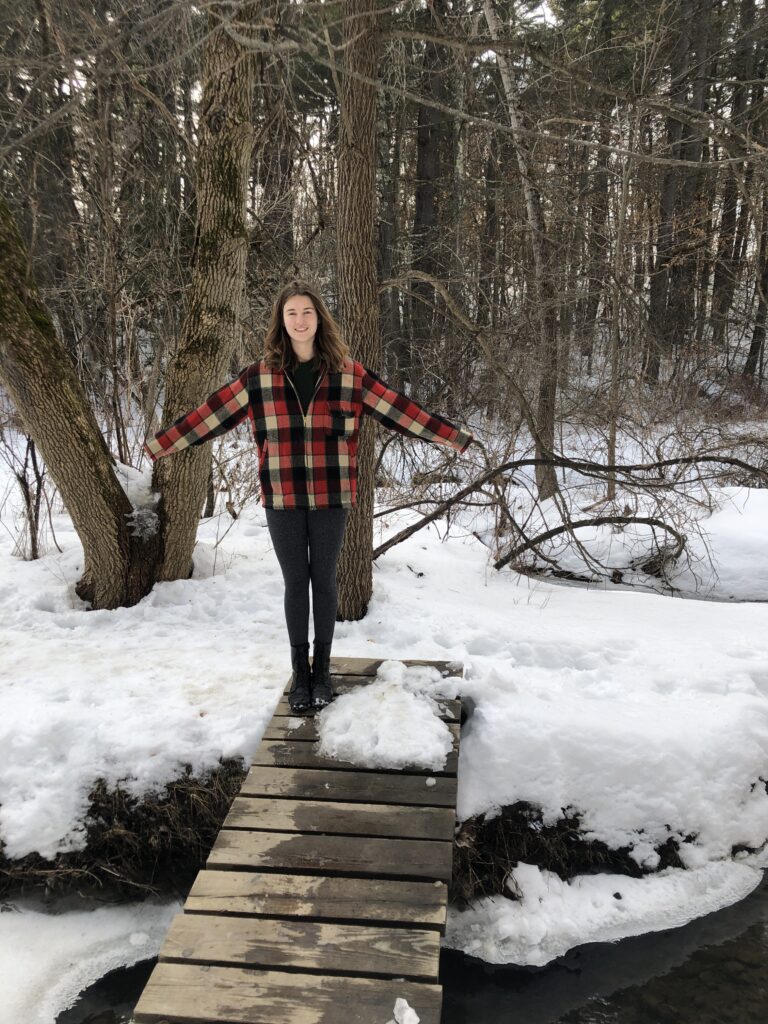
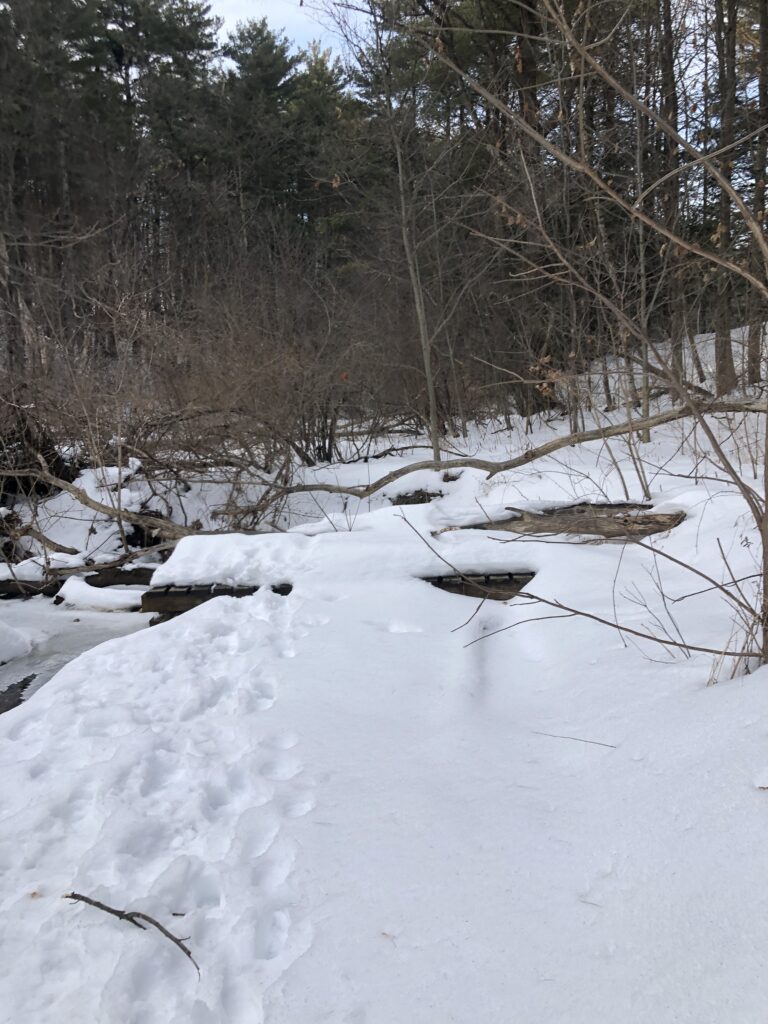
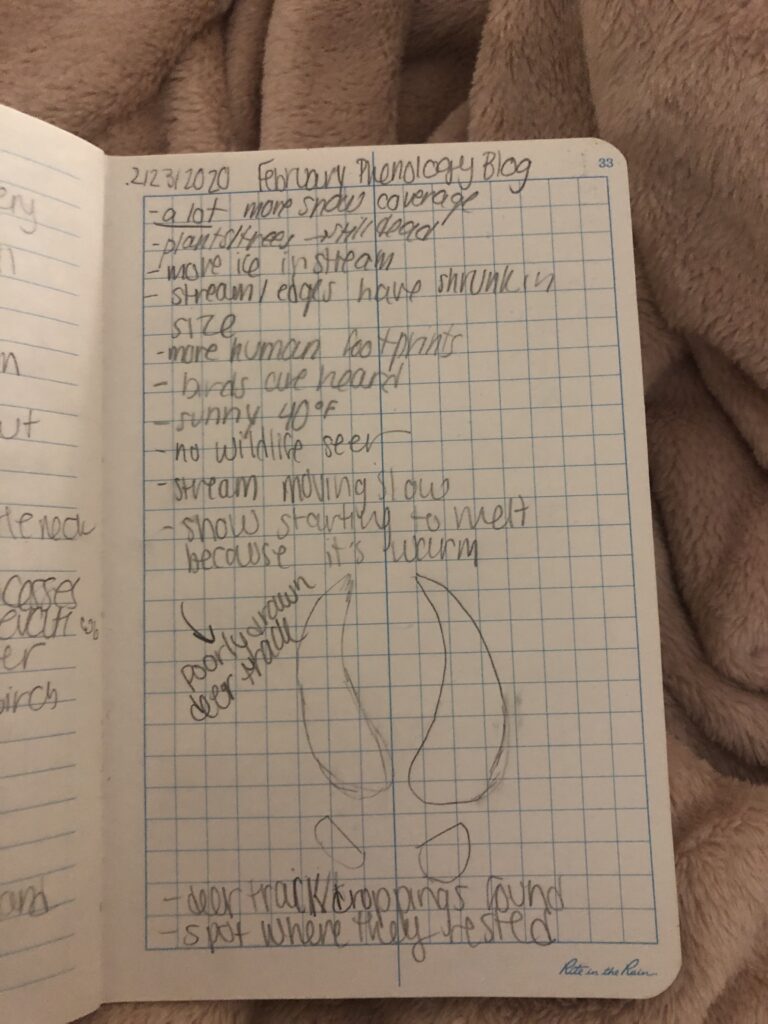
Field Notes
Works Cited:
“White-Tailed Deer.” White-Tailed Deer | Vermont Fish & Wildlife Department, vtfishandwildlife.com/learn-more/vermont-critters/mammals/white-tailed-deer.
